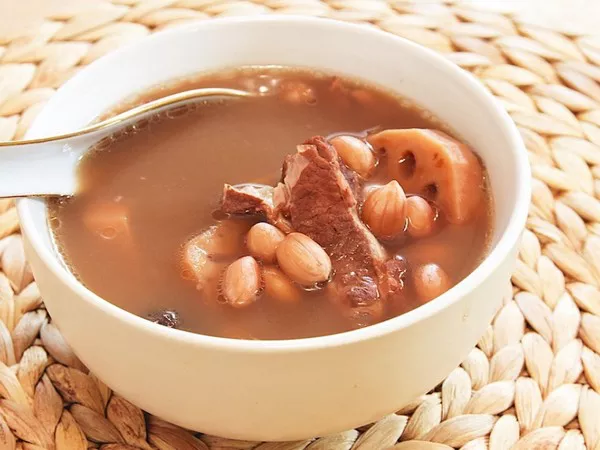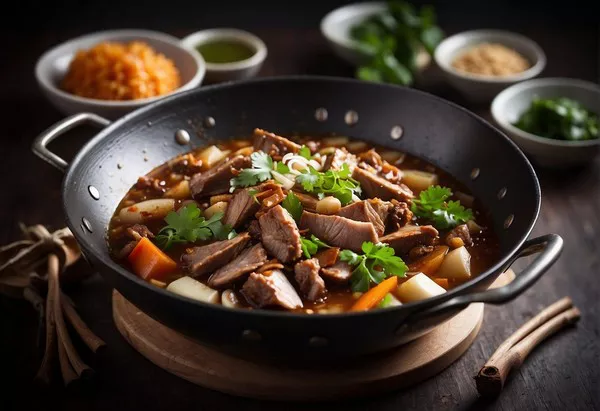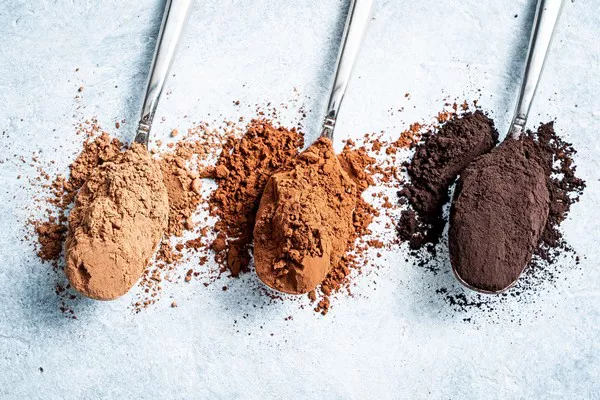Chinese cuisine is celebrated worldwide for its rich flavors, diverse ingredients, and intricate cooking techniques. Among its repertoire of soups, lotus root soup stands out as a timeless classic, cherished for its delicate taste and nutritional benefits. Rooted in centuries of culinary tradition, mastering the art of cooking lotus root soup Chinese style requires attention to detail and an understanding of the ingredients. In this comprehensive guide, we delve into the essence of this beloved dish, exploring its history, nutritional value, and step-by-step preparation.
Understanding Lotus Root: A Culinary Gem
Before delving into the culinary journey of preparing lotus root soup, it’s essential to understand the star ingredient – lotus root. Known for its crisp texture and mild flavor, lotus root is the edible rhizome of the lotus plant (Nelumbo nucifera). Widely cultivated in Asia, particularly in China and Japan, lotus root is revered not only for its culinary versatility but also for its numerous health benefits.
Lotus root is packed with essential nutrients, including dietary fiber, vitamins C and B6, potassium, and manganese. Its high fiber content aids digestion and promotes gut health, while vitamins and minerals contribute to overall well-being. Additionally, lotus root is believed to possess various medicinal properties in traditional Chinese medicine, such as improving respiratory health, boosting the immune system, and promoting longevity.
A Glimpse into the History of Lotus Root Soup
Lotus root soup holds a special place in Chinese culinary heritage, with roots tracing back to ancient times. Historical records suggest that lotus root has been a staple ingredient in Chinese cuisine for over two millennia. Initially enjoyed for its nutritional value, lotus root gradually became a culinary symbol of purity and perfection.
In traditional Chinese medicine, lotus root is revered for its cooling properties, believed to balance the body’s yin and yang energies. Consequently, lotus root soup has been a favored remedy for alleviating heat-related ailments and maintaining internal harmony, especially during the hot summer months.
Over time, lotus root soup evolved from a medicinal tonic to a beloved comfort food enjoyed in households across China and beyond. Its subtle sweetness, combined with the richness of other ingredients, creates a harmonious blend of flavors that appeals to both the palate and the senses.
Ingredients: The Building Blocks of Flavor
To embark on the culinary journey of cooking lotus root soup Chinese style, gathering high-quality ingredients is paramount. While the recipe may vary depending on regional preferences and personal tastes, certain key components are essential for capturing the authentic essence of this dish. Here’s a list of ingredients commonly used in preparing lotus root soup:
1. Lotus Root: Select firm and unblemished lotus roots, preferably medium-sized, for optimal texture and flavor.
2. Pork Ribs or Chicken: Choose tender cuts of pork ribs or chicken to impart depth and richness to the soup base.
3. Dried Red Dates (Jujubes): These sweet and aromatic fruits add a subtle sweetness to the soup, enhancing its overall flavor profile.
4. Dried Goji Berries: Also known as wolfberries, dried goji berries lend a hint of tartness and vibrant color to the soup.
5. Dried Shiitake Mushrooms: Rehydrated shiitake mushrooms contribute an earthy umami flavor, elevating the complexity of the soup.
6. Ginger and Garlic: Fresh ginger and garlic provide aromatic depth and enhance the savory notes of the broth.
7. Scallions: Fresh scallions, both white and green parts, are used for garnishing and adding a touch of freshness to the finished soup.
8. Seasonings: Common seasonings include salt, soy sauce, and a dash of rice wine or Shaoxing wine for added depth of flavor.
Preparation: Crafting the Perfect Soup
With the ingredients assembled, it’s time to embark on the culinary journey of preparing lotus root soup Chinese style. Follow these step-by-step instructions to create a soul-warming bowl of this timeless delicacy:
1. Preparation of Lotus Root: Begin by peeling the lotus root and slicing it into thin, round discs. Rinse the slices under cold water to remove any dirt or impurities. If the lotus root has any hollow chambers, carefully remove them to ensure even cooking and a pleasing texture.
2. Preparation of Ingredients: Soak the dried shiitake mushrooms in warm water until they become tender, then remove the stems and slice them thinly. Similarly, rinse the dried red dates and goji berries to remove any debris. Peel and crush the ginger and garlic cloves, and finely chop the scallions for garnishing.
3. Blanching the Pork Ribs or Chicken: In a pot of boiling water, blanch the pork ribs or chicken pieces for a few minutes to remove any impurities and ensure a clear broth. Once blanched, remove the meat from the pot and rinse it under cold water before proceeding to the next step.
4. Building the Soup Base: In a large soup pot or Dutch oven, heat a tablespoon of oil over medium heat. Add the crushed ginger and garlic, sautéing until fragrant. Then, add the blanched pork ribs or chicken pieces, allowing them to brown slightly for added flavor.
5. Simmering the Soup: Fill the pot with water, enough to cover the ingredients, and bring it to a gentle boil. Skim off any foam or impurities that rise to the surface. Add the sliced lotus root, dried red dates, goji berries, and sliced shiitake mushrooms to the pot.
6. Seasoning and Flavor Enhancement: Season the soup with salt and a splash of soy sauce to taste, adjusting the seasoning as needed. For an extra layer of flavor, add a dash of rice wine or Shaoxing wine. Allow the soup to simmer over low heat, partially covered, for at least an hour to allow the flavors to meld and develop.
7. Final Touches: Once the soup has simmered to perfection and the lotus root is tender, it’s time to serve. Ladle the hot soup into bowls, garnishing each serving with freshly chopped scallions for a pop of color and freshness.
Tips for Success: Elevating Your Lotus Root Soup Experience
While the basic recipe for lotus root soup is relatively straightforward, mastering the art of Chinese cooking lies in the subtle nuances and techniques that elevate a dish from good to exceptional. Here are some tips to enhance your lotus root soup experience:
1. Quality Ingredients: Use fresh, high-quality ingredients whenever possible to ensure optimal flavor and nutritional value. Look for lotus roots that are firm, free from blemishes, and heavy for their size.
2. Balancing Flavors: Achieving the perfect balance of flavors is key to creating a memorable lotus root soup. Taste the soup as it simmers and adjust the seasoning accordingly, balancing sweetness, saltiness, and umami notes.
3. Texture Matters: Pay attention to the texture of the lotus root slices – they should be tender but still retain a slight crunch. Avoid overcooking the lotus root, as it can become mushy and lose its appeal.
4. Variations and Personalization: Feel free to experiment with additional ingredients or variations of the recipe to suit your preferences. Some cooks may add dried scallops or dried squid for a seafood twist, while others may prefer a vegetarian version with tofu and mushrooms.
5. Slow and Low Simmering: Patience is key when simmering lotus root soup. Allow the soup to simmer over low heat for an extended period, allowing the flavors to develop slowly and intensify.
6. Storage and Reheating: Lotus root soup can be stored in the refrigerator for up to three days or frozen for longer-term storage. When reheating, gently warm the soup over low heat to prevent the ingredients from becoming overcooked.
In Conclusion: A Culinary Masterpiece
Lotus root soup embodies the essence of Chinese culinary heritage – a harmonious blend of flavors, nourishing ingredients, and time-honored techniques. By mastering the art of cooking lotus root soup Chinese style, you not only embark on a culinary adventure but also pay homage to centuries of tradition and culture.
With its delicate sweetness, earthy aroma, and comforting warmth, lotus root soup transcends mere sustenance to become a soul-nourishing experience that delights the senses and soothes the spirit. Whether enjoyed as a light appetizer, a hearty meal, or a restorative tonic, this timeless delicacy continues to captivate hearts and palates around the world, one bowl at a time.



























